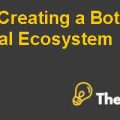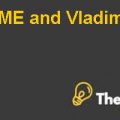Introduction
Strategic management is the effectivemanagement of day-to-day operational activities of the companies to streamline the processes in a way that itoffers acompetitive advantage to the company and also renders to the sustainability of the company in the competitivemarket. The aim of the strategic management is to define and implement such business strategies that offer the company the flexibility and vision thathelps in maintaining the competitive advantage and leads the daily operations with the right alignment to the business strategy.
Also, due to the effective strategic managementtheorganizationsareable to developtheirexpansion strategies and manage the aggressive growth in saleswhile evaluating the right trade-offs between different options. It also helps the organizationsindeveloping the global strategies and the identification of the cost reduction methodand its successful implementationin the business process, leading to maintaining the competitive advantage.
Also, it is due to the effective strategicmanagement thatenables the organizationsto opt for different business strategies, like blue ocean strategy or red ocean strategy along with the market strategy of market penetration or productdevelopment. All these elementsmake the part of the effective strategicmanagement and thuscontrols the highs and lows of the business in an effective manner, leading to sustainability and competitive position.
The sections below lay down the summary and reflectionover the case studies of HBR that reflects the strategic managementprocess of different companies. Thecompanies discussed are, Louis Vuitton, Coke & Pepsi, Dark Horse, NFL, Tata House, Haier, and Disney. Each section below reflects the strategic management process and global strategies and cooperate governancefollowed by these companies.
OverallAssessment and Self-Assessment of the HBR case studies Harvard Case Solution & Analysis
Analysis
House of TATA
The House of Tata case study depicts the strategicmanagement of the company’soperations and business strategy with the market forces.It depicts how the effective managementof the resources and continuous improvement in the business process couldlead to effective cost control processes along with the consolidation ofthe resourcesleading to establishing the competitive advantage in the market.
The house of Tatadeals in multiple groups like consumer goods, Hoteling and Steel. Overtheperiod of time, under the global strategy, the companyexpanded through mergers and acquisitions, enhancing the market share and also the resources.The company from the start developed the vision of becoming the global player and hence laidthe goals and objectives with right synchronization with the business strategy that leads to making the global presence of the company.
Since the company deals in consumer goods and offers tea, it strategically acquired the foreign tea brandand started sellingits own brand tea, covering amajorportion of India. Inadapting the particularstrategy of merger and acquisition, the company identified the market gap or theopportunity to offer its ownbrand tea, instead of becoming the supplier of the tea, this strategy enhanced the brand image and brandawareness of the company, leading to high sales and profitability.
Also, in the Steel industry, the company acquiredthe internationalplayerCorus, to enter in the steel market internationally.The major success of the TATA group was, it consolidated the resources from all of its locations to develop the best match of the resources and the cost. Also, it developed the central control system to deal and manage the SBUs.............
This is just a sample partical work. Please place the order on the website to get your own originally done case solution.










